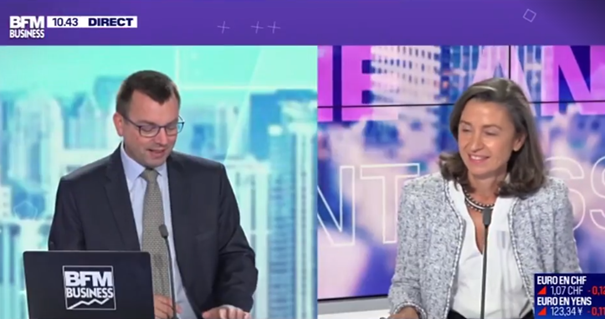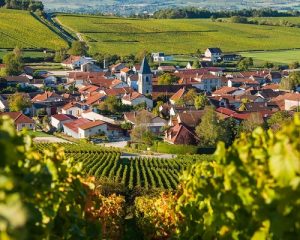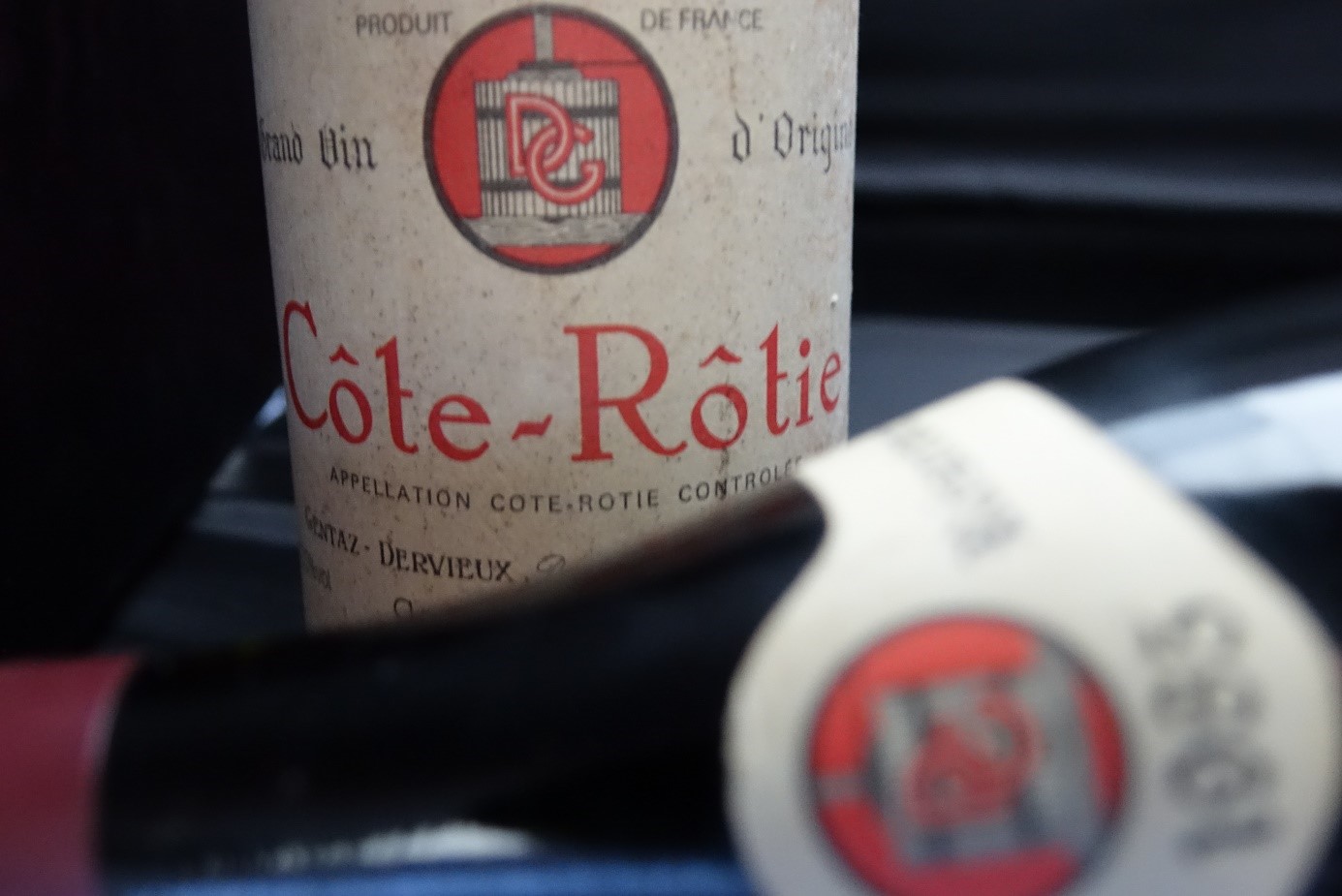
Today, we’re going to look at a region that occupies a rather special place in the world of wine: Champagne. Does its value lie in the enjoyment factor or with investment in mind? Angélique de Lencquesaing was interviewed on the BFM Business programme about what is currently at stake for our favourite fizz.
The least we can say is that this region is struggling at the moment…
Yes, Champagne is one of the regions that seems to have been the worst affected by the coronavirus crisis. The anxiety felt during lockdown, coupled with the closing of bars, restaurants, hotels; the cancellation of celebrations and weddings; the fact that travelling has been reduced to necessary journeys. And now we have a curfew in most of France’s biggest towns and cities. All of these factors have had dramatic consequences for the Champagne industry. It’s clear that wine enthusiasts haven’t really been in the mood to open a bottle of Champagne of late.
Sales have dropped dramatically since the start of the year…
Yes, when we look at the month of April, when so many countries were in lockdown, Champagne saw a 68% drop in sales. Large retailers have reported a drop of 23% between January and July. Overall, the 2020 figures don’t make for pleasant reading, with the drop likely to settle at -20 to -30%.
Champagne has lived through other crises: the Gulf War in 1991, the financial crash of 2008…
Of course, but usually when the international market is affected, French clients act as a kind of shock absorber. And the reverse is also true. The difference here is that the health crisis has affected every market in the same way. In 2019 the Champagne industry sold 300 million bottles. This year they are trying to reach 240 million, or 200M at the very least.
Have you also noticed this drop in the e-commerce sector?
At iDealwine, Champagne represents less than 10% of our total revenue (7% at the end of September). With an increase of 65% in our sales of Champagne at fixed price, we are not representative of the state of the market more widely. This is especially as we focus on the top of the range, selling non-vintage cuvées as well as several prestige and vintage champagnes. This should be emphasised, as vintage champagnes [those produced from a single year’s harvest, rather than a blend] in theory have a better ageing potential. These are, therefore, more appropriate for investment, compared to non-vintage cuvées (Brut sans année – BSA).
Is this also what you’re seeing at auction?
At auction – always a good indicator for wine investment – Champagne sales are holding up, even if their share is lower (6% of bottles sold in the first half of 2020, by volume). In the first 6 months of 2020, the average selling price for a bottle of Champagne was €164, which is significantly higher than what we see for non-vintage cuvées. This is a sign that the market is leaning towards prestigious bottles that aren’t feeling the effects of the crisis quite so much.
So is Champagne a safe investment in times of crisis?
Let’s say that rarity is the main purchase motive for certain cuvées. Some champagne houses, such as Salon, choose to not necessarily make a cuvée every single year. A little reminder: a non-vintage cuvée is made from reserve wines. This is a blend of several harvests from different years, and this is what allows for a consistent and recognisable style. In a way, this is the signature cuvée of a given champagne house. Vintage cuvées, on the other hand, are made from the grapes of just one harvest. A vintage cuvée will only be made if the quality is judged high enough. These bottles are rarer, and often quite exceptional.
You mentioned Maison Salon?
Yes, their famous “S” cuvée was first made in 1905. Since then, it has been produced in just 41 vintages, using a hectare of Chardonnay planted at Mesnil sur Oger. Purchased by a British client, the 1969 vintage recently went under the hammer for €2,456. This Champagne is a real collectors’ bottle, coveted by wine enthusiasts across the world.
If a Champagne has already aged quite a bit, is it still drinkable?
It’s good to note that some fine, vintage cuvées are particularly prized by clients who are looking not for fizz, but for a good wine. As the years pass, a really fine white wine is revealed. You certainly shouldn’t throw away a mature, vintage champagne – it might be of great value!
Are there any other names that get enthusiasts excited?
Maison Krug has a particular aura surrounding it due to the quality of its produce, both vintage and non-vintage, and they are highly coveted because of their rarity. A brut 1979 vintage – which isn’t even the rarest from this house – recently scraped the 1K threshold, selling for €982. We should also note the prices reached by mature vintages of the Dom Pérignon cuvée, another house that has been taken into the fold of the LVMH group. In its 1990 vintage, this bottle has sold for €761.
At these kinds of prices, are vintage cuvées worth purchasing at auction?
Once again, rarity is what upholds interest for this kind of bottle. And their rarity only increases over time, with other bottles gradually being consumed. So yes, fine champagnes are worth buying, including those at lower prices. One example is the Bollinger R.D. cuvée, at €368. It is also worth putting some of the more recent, fine vintages in the cellar, I’m thinking especially of the 2008 vintage, a remarkable year. You should look for this one among the houses already mentioned, perhaps Taittinger (Comtes de Champagne), or smaller producers.
Speaking of smaller producers, do they have a place in an investment cellar?
Yes, absolutely. Some of these names are already sought internationally, names like Anselme Selosse: their assorted case of six bottles from different ‘lieux-dits’ has passed the threshold of €2,000. It’s good to remember that Champagne is a region where environmental issues are being engaged with more and more, with several producers converting to organics and biodynamics. Maison Roederer is a good example (2004 Cristal: €268). Trendier names that are harder to find are seeing an explosion in demand. Some that come to mind are Pierre Peters, Horiot, Bedel, Franck Pascal, and Boulard. Other names to follow closely are Chartogne Taillet, Marguet, Bereche, and Savart.
Will the crisis in Champagne lead to a price drop for this year’s produce?
Producers in Champagne have had the fortune of bringing in a good harvest this year. They reached an agreement to limit their yields, retaining only the best of the harvest, meaning 8,000 kg per hectare instead of the usual 12,000. This is a way of maintaining the image of their produce and, hopefully, avoiding a price crash at the end of the year. In any case, the industry is acting to come out of this as best it can, and concentrating on the quality of production is surely the key to surmounting this unprecedented crisis. This is an excellent moment to acquire some beautiful Champagnes for your cellar.
Find out more about the wine auction market
See our Champagne selection
Interested in selling your cellar via iDealwine?
Get a free estimate of your wines here



